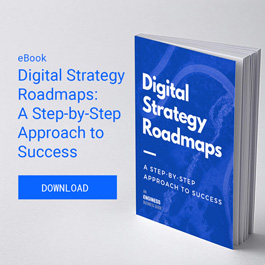
Photo by Dr. Wendy Longo
You may have heard of web accessibility, if not through the digital design community, then through what are increasing client requests. Not accessibility in a sense of people in developing countries being able to access the Internet – albeit a burgeoning market consideration – but in the context of accommodating people with disabilities.
I’ve lectured on information and interface design at the University of Toronto for many years, and have purposefully shifted further into inclusive design. I’ve not abandoned the pursuit of helping to craft usable experiences – ones that are intuitive, have ease of use, and are aesthetically pleasing. However, methodologies such as the building of fictitious personas and what-if scenarios, while useful in breaking a designer’s potentially limiting mindset or tunnel-vision of what a “user” should want – don’t go far enough. In considering the wide diversity of potential Information and Communication Technology (ICT) consumers, we try and identify many flavours of “us”. Out in the periphery, barely noticeable, are the “disabled”, or “them.” After all, goes the rationalization, we can’t hope to accommodate absolutely everyone and their dog.
Here’s the thing. They are us, if not by extension through social or family relations, then it’s only a matter or time. Which is to say, there is no Us and Them. Take me, for example….
I’m on the lower cusp of the Boomer generation, an enormous mass of people turning 50, 60, some almost 70, with vast spending power and in turn market influence. It’s not only knees that are going, but sensory channels. My annual visits to the optometrist usually begins with her asking me, “What age are you now?” (I don’t know if it’s rhetorical, as she’d have my folder with vitals at hand.) On hearing my reply, she’d say something like, “Well, maybe it’s not quite time….”
This year, on sitting down in her office chair, I blurted, “It’s happened.” It was my nearsightedness. Things have gradually over the course of several months started to get blurry; the small print in legalese here and there, ingredients and nutritional info on food packages, and so forth. I’m also starting to ask people to repeat themselves. Is my fine motor movement and dexterity, used for example in dis- and re-assembling gadgets (an old hobby), starting to become more challenging? Seems that way. I’ve till now largely taken these aspects of being “young and healthy” for granted. And then there’s the cognitive misfirings, the “senior moments” of forgetting a name, a task, opening a drawer or entering another room to get… what…?
A core pursuit of universal or inclusive design is to have tools work for, or information available to, people of all sorts – whether or not they’ve temporary, recurring or ongoing disabilities. This results in the benefit of those products or services working better for everyone across situations, capability, skills, past experiences, wants, opinions and perspectives. If you’re not as motivated by “worthy causes”, since they may not put food on your table, then consider that designing inclusively can help your team’s output be more adaptable, robust, desirable… and ultimately, profitable.
Accessibility measures and standards are increasingly part of RFP bid criteria. There’s been global legislative shift in enforcing accessibility of products and content, with stiff fines across states and provinces – and more getting on board. The World Wide Web Consortium (W3C) has a second iteration of the Web Content Accessibility Guidelines (WCAG), now over five years old, championed by founder Tim Berners-Lee:
The power of the Web is in its universality. Access by everyone regardless of disability is an essential aspect.[1]
If you haven’t yet comprehended this message and momentum, it’s high time.
[1] Quoted at the time of the launch of the W3C’s Web Accessibility Initiative


